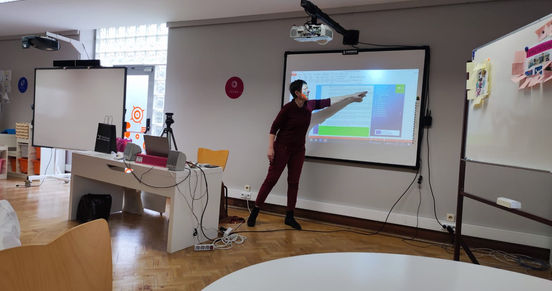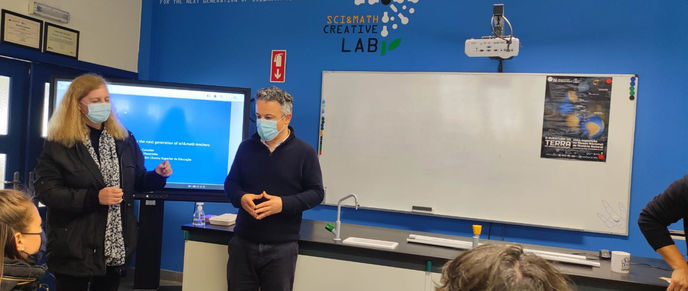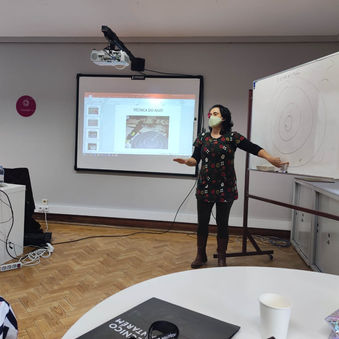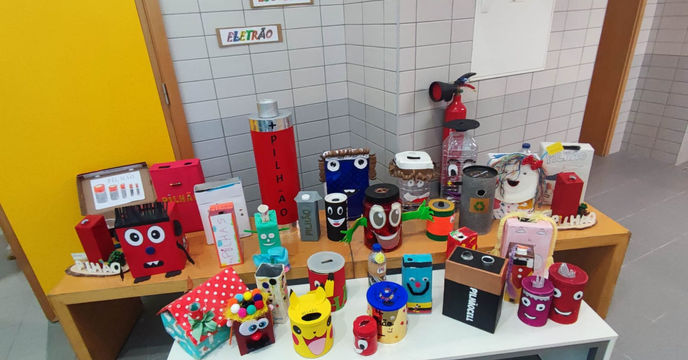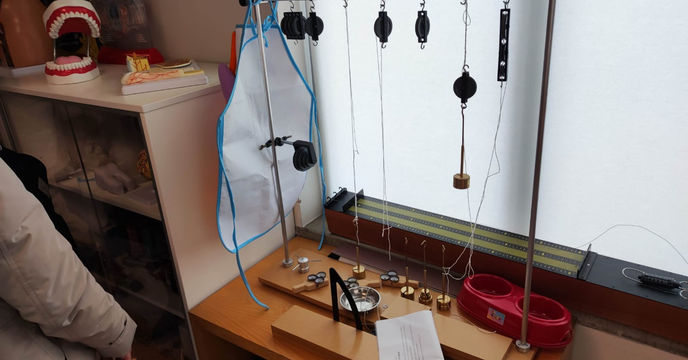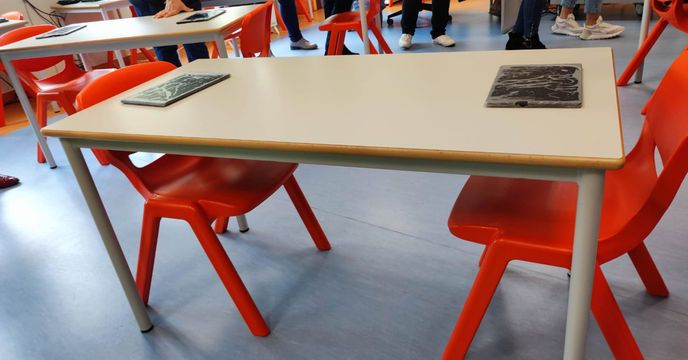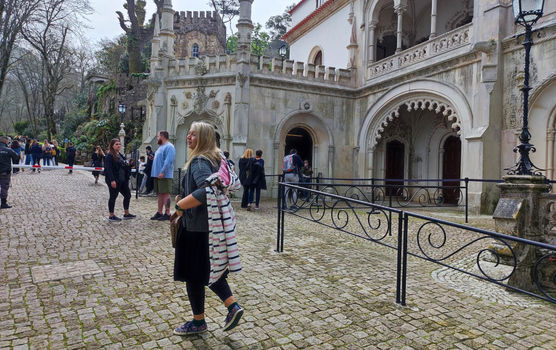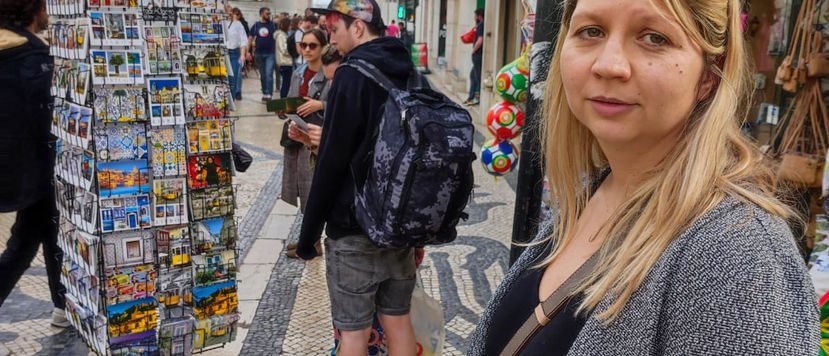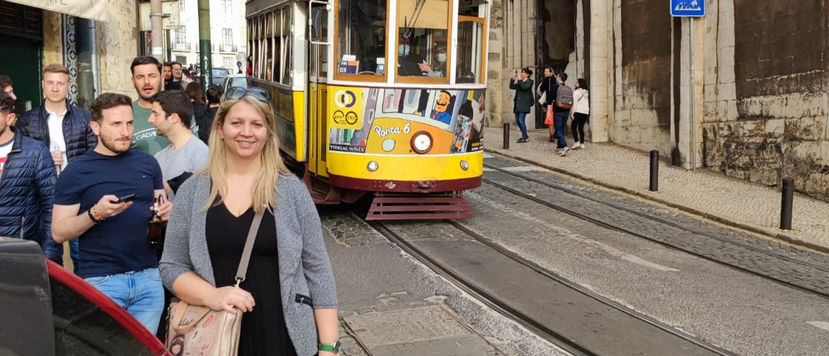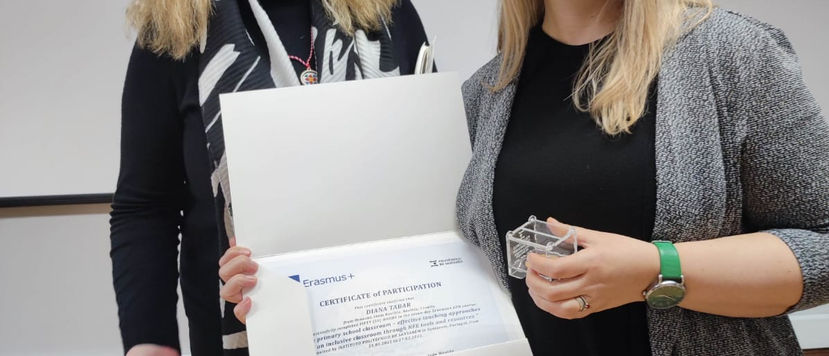The primary school classroom – effective teaching approaches for an inclusive classroom through NFE tools and resources
Diana Tabar
Course time: 21.3. - 27.3. 2022
Location: Escola Superior de Educação, Santarem, Portugal
Day 1.
21.3.2022.
We have lectures at the local polytechnic Instituto Politécnico de Santarém. We have 3 leaders. Professors of that polytechnic Ana Silva, Ana Luisa Torres and Elena Lazarova, project coordinator of the Bulgarian educational agency Prosveta-Sofia. At the beginning of the lecture, we all introduced ourselves and got to know each other. The entire education plan was presented On the first day, the training was led by Elena Lazarova. We played a game: "I bring the mail to the person who…" One person stands in a circle and says that sentence and ends with… who loves / has / wants /… All the people who find themselves in that sentence come to the middle of the circle, and the others remain seated in their seats. At the signal of the leader, everyone in the middle of the circle should find a place to sit. The person who has no place, again says the sentence “I bring a letter for the person who After the icebreaker, we got post-it notes. One color for the expectations for this education, and one for the fears we have. The presenter read the answers and answered some questions, which she could, immediately. The presenter presented YESI: Young learners Embrace Social Inclusion and Social Involvement. A project on human rights and children's rights with the aim of teaching children to be open-minded and appreciate all people regardless of the differences between them; empathetic and aware of values such as tolerance and social inclusion; to acquire initial skills on how to be active members of the small communities in which they live. Official project website: http://yesii.eu/en/home/ We go through a series of icebreakers. Traditional Portuguese game: Pisces Part of the players stand in a circle and without others hearing agree on a number, (it is best to point fingers). Students hold hands in a circle, and the others pass from one side of the classroom to the other through that circle, slipping under their arms. The students in the circle count aloud and when they reach the agreed number, they put their hands down. Everyone in the circle is a captured fish and is received with other players by the hand. The game continues until there are 3 students left who are declared winners. Mosquito: Group stands in a circle . The facilitator puts a mosquito on the head of one person who has to squat to avoid the mosquito. The person standing to the left and right must clap their hands above the head of the person who squatted to catch the mosquito, but the mosquito escapes and lands on the head of the person who was to the right of the person who first squatted. When the group is already well established and performing the game quickly, the facilitator will add more mosquitoes until it is almost impossible for the group to catch all the mosquitoes. Zip-Zap-Doing: Players stand in a circle and transfer "energy" to another player. The words he is allowed to pronounce are zip, zap, boing, pššš. : 3194-bb3b-136bad5cf58d_ Zap: ok pronounce that word, the player points to any person except those left and right of himself. Boing: when a person directs energy, that person can squat, raise his arms in the air and shout "boeing". In this way, it rejects the energy that returns to the person who directed it. Pššš: If the energy is sent to a person with the "zip" command, he can squat and say pššš and the energy passes over his head and the energy reaches the next person. Toing: If the person to whom the energy was sent hesitates too long to give the next command or the person forwarding the command gave the wrong command (eg zap to the person next to him) then siv the others raise their hands in the air, start waving and talking toing. Frisbee: You look at a person somewhere in a circle and say hi. That person, along with the person who said hi come to the middle of the circle, introduces themselves and swaps places. If a person says a pre-arranged word (one that is difficult for students to pronounce) everyone changes places in the circle. A person can say the word frisbee, pretend to throw it, everyone else is looking in that direction and speech Ooooo Polyglot: players in the team come up with completely new words that will mean in their "team" language: hi, goodbye, compliment. (it can be anything else that is relevant at a given time). After that, one player from one team goes to another team and teaches them in words. The facilitator then assigns various tasks. The two teams must greet the third with their language. They must greet each other in each other's language… Human chain: One player leaves the room, while the others hold the chain holding hands. When a person returns to the room, he must "untangle" people, telling them where to turn or where to go, but all people must still hold hands. Name and gesture: The players are standing in a circle. The first person introduces himself and shows a gesture with his name. The second person repeats the name and gesture of the first person and introduces himself and shows his gesture. The last in line must repeat all names and all gestures. Playing with a blanket: Players divided into two teams. Two people are holding a blanket. One person comes to the blanket from each team. When the blanket is lowered, the point for that is won by the person who first said the name of the person she saw behind the blanket. Hedgehog: Players move freely around the classroom. At the sign, everyone huddled on the floor like a hedgehog and put their feet between their knees. One player is covered with a blanket. The others have to guess who is hidden.
Day 2
22.3.2022.
We talk with Ana Silva about the differences between formal, non-formal and informal education. Represents some of the non-formal methods of education. 1. Teamwork Team work in small groups of 4-6 students has been found to be a very effective method of work. In small groups, students have the opportunity to acquire knowledge, understand and apply such knowledge, and to form attitudes and make decisions. By discussing, participating, and communicating in a group, students can develop and practice appropriate skills. Organizing classes into small groups can be accomplished in a variety of ways. a. The teacher introduces the topic, the students discuss it in groups and present their conclusions to all the students._cc781905-5cde-3194-bb3b-1363f-136 b. Students work individually and then discuss their conclusions in a group._cc781905-5cde-3194-bb3b-136bad5cf58d c. The class discussion asks questions and divides students into small groups to discuss and suggest solutions. 2. Brainstorming Brainstorming is a creative method that aims to express different ideas. It is most commonly used to cover as many aspects of the topic being discussed as possible. Brainstorming does not mean simply asking for ideas from others. For effective brainstorming, there are a few rules to follow: a. the question or topic must be well defined b. Team members must express any idea that comes to mind in response to a question c. No one should comment on the ideas of others. We insist on that. Brainstorming is pretty easy to use. The teacher writes the topic or question on the board, then explains the rules to the class and sets a time limit, eg 5 minutes. The teacher writes the ideas on the board. Depending on the ideas written, ideas can be categorized, i.e. some ideas can be categorized under the same category. The next step is to process the ideas and move on to the action. At this stage some ideas can be clarified, evaluated, selected and ranked. If there is no differentiation of ideas, one will get the impression that all ideas are equally good and acceptable. 3. Role games In role-playing games, a certain situation is transferred from the real world to the role-playing framework. Role-playing games are useful when we want to analyze certain behaviors or test new or alternative behaviors within a controlled and safe framework. To use role-playing games it is necessary to have a warm and open atmosphere in the classroom. It is important that all participants are aware of the meaning of the role play and that they agree on certain basic rules in order to work together in a structured way. Therefore, the teacher must briefly explain the methodology of role play, and the class should set some rules for students and role play. The topic is then defined as a specific situation and described in full detail to make it easier for participants to understand. Each selected scene should not last longer than a few minutes. Students, who do not actively participate in the role play, act as observers and are the audience. The teacher acts as a coordinator or “director” and is responsible for planning, implementing and evaluating the activities. 4. Simulation The simulation game (Patricia K. Tompkins, 1998) is a "revival" of a real situation. Designed to explore the key elements of that situation. Similar to role-playing, simulations always involve a role element. During the simulation game, students need to perform a certain situation based on real life situations, while in role playing the participants represent and experience some type of character known in everyday life. 5. Fine art (drawing, painting, collage) Certain art forms are useful for an informal approach to teaching within a group. In this case, students not only discuss or write about different social situations, but also present those situations with pictures and drawings. They can also make collages to express themselves and their skills without the need for specific talent or specialized skills. It is important that students overcome their fears in artistic creation. It is therefore necessary to further explain that the goal of such an exercise is not to create a work of art but to express it in a different way. 6. Case study A case study (UNSW Australia) is a presentation of an activity, event, or problem that contains actual or hypothetical situations. Case studies can be used to help students understand how real-life complexity affects their decisions. Common cases are: a. to be taken from real life or are hypothetical b. consists of several parts and each part usually ends with problems and discussion points c. includes enough information for the reader to solve problems and issues d. authentic to the reader (the case contains the environment, personalities, sequence of events, problems and conflicts) Materials can be found at: http://othernessproject.eu/en/activities_en/ We did the first simulation resulting from the YESI project. Objective: Students will learn the meaning of justice and injustice; distinguish justice from injustice Details of the course can be found at: https://bit.ly/portugal-detalji-tijeka-sata In the second part, we are hosted by professors of the Polytechnic Bento Cavadas and Nelson Mestrinho, who teach students the methodology of natural sciences. They present their project "Mad rocket" and according to the instructions we make a spacecraft and try to determine the exact angle and strength of the launch as the rocket reached us from Earth to Mars.
Day 3
23.3.2022.
Elena Lazarova introduced us to 5 principles of inclusive education. Principle 1: Diversity in the classroom enriches and strengthens education Principle 2: Individual skills-based curriculum Principle 3: Student engagement and voting rights Principle 4: Involve all critics Principle 5: The inclusion teacher must be committed, educated and have practical skills The second simulation came next. Objective: Students will learn that there are differences and that these differences are often the cause of discrimination, find ways to correct or not discriminate against people. Details of the course can be found at: http://yesii.eu/atividades/imp_act.php?reg=1&lingua=en&ene=8&rel=1 We did the afternoon in the municipal building where we were greeted by the head of classes and the mayor. You can see the official announcements here: Post 1 - https://bit.ly/portugal-objava1 Post 2 - https://bit.ly/portugal-objava2 Post 3 - https://bit.ly/portugal-objava3
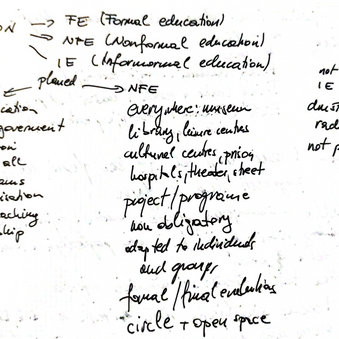
Day 4
24.3.2022.
This day is reserved for a tour of the Escola Básica Entroncamento nº1 primary school in Entroncamento. Free education in Portugal starts at the age of 3, but is compulsory from the age of 6. They have a similar education system, but 12 years of education are compulsory. The school is well equipped, they have their own laboratory adapted to students, about 15 students per class. There are 11 different nationalities in this school.
Day 5
25.3.2022.
Today we were exclusively dealing with the YESI project and we did some of the activities that resulted from that project. Elena Lazarova and Ana Torres took turns in the activities. The third simulation was dedicated to children’s right to education. Aim of this lesson: Students will learn that education is a fundamental human right and that it is the foundation of exercising other rights. They will learn that there are inequalities in education in the world. Details of the course can be found at: https://bit.ly/3QFfrMy. The fourth simulation was devoted to children’s right to express opinions and attitudes. Aim of this lesson: Students will be introduced to their right to opinion and expression; become aware of their right to seek and receive information in various ways and to participate in discussions on issues affecting them; aware that they can react if their right is violated. Details of the course can be found at: https://bit.ly/3HOfiT8. The fifth simulation is dedicated to differences Aim of this lesson: Students will understand the idea of diversity by demonstrating different languages used by people in different countries; develop an awareness that people use language differently; accept the different ways in which people express themselves in word language and body language. Details of the course can be found at: https://bit.ly/3tZXtee. The sixth simulation is dedicated to differences Aim of this lesson: Students will discover the diversity of religions that exist in the world; analyze differences and similarities between religions. Details of the course can be found at: https://bit.ly/3yd4SrV. The seventh simulation is dedicated to differences Aim of this lesson: Students will learn the importance of caring for and respecting wildlife Details of the course can be found at: https://bit.ly/3u04iwj.
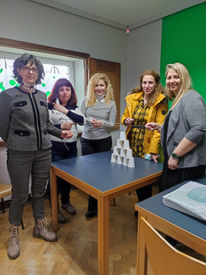
Day 6
26.3.2022.
Elena Lazarova presented the eTwinning platform. She presented some of her projects. After that, it was our turn to present ours. I presented all the projects I am working on this year. It was time to get acquainted with the Portuguese cultural heritage. We headed to Sintra. We visited a place that is under UNESCO protection. The land that is now Quinta da Regaleira has had many owners over the years. He belonged to the Viscountess of Regaleira, a family of wealthy merchants from Porto. 1892. sold to Carvalho Monteiro for 25,000 reis. Monteiro wanted to build a confusing place where he could collect symbols that reflect his interests and ideologies. With the help of Italian architect Luigi Manini, he restored the 4-hectare estate. Among other new features, he added enigmatic buildings that reportedly contained symbols related to alchemy, Freemasonry, the Knights Templar, and the Rosicrucians. The architecture designed by Manini evoked Roman, Gothic, Renaissance and Manueline style. Construction of the current estate began in 1904, and most of it was completed by 1910. The property was later sold in 1942 to Waldemar d'Orey, who used it as a private residence for his large family. He ordered repairs and restoration work on the property. In 1987, the property was resold to the Japanese Aoki Corporation and ceased to serve as a residence. The corporation kept the property closed to the public for ten years, until it was purchased by the Sintra City Council in 1997. Extensive renovation efforts were immediately launched throughout the property. It was finally opened to the public in June 1998 and began hosting cultural events. In August of the same year, the Portuguese Ministry of Culture classified the property as "property of public interest".
Day 7
27.3.2022.
We started the day with a tour guide Antonio who showed us all the beauties of the city of Lisbon. He told us interesting stories about their rulers. Lisbon is home to the oldest bookstore in the world. They survived one of the strongest earthquakes in Europe. They also lived for 30 years under the dictatorship of Salazar. There’s a lot I could write, but it’s best to come by yourself. After lunch, a confirmation for our work arrived. Ceremonial awarding of our certificates of participation in the course. Before the award itself, we had an interesting way of evaluating the course. We had to choose some of the offered drawings and use them to describe how we felt, what we learned and what we carry with us.






